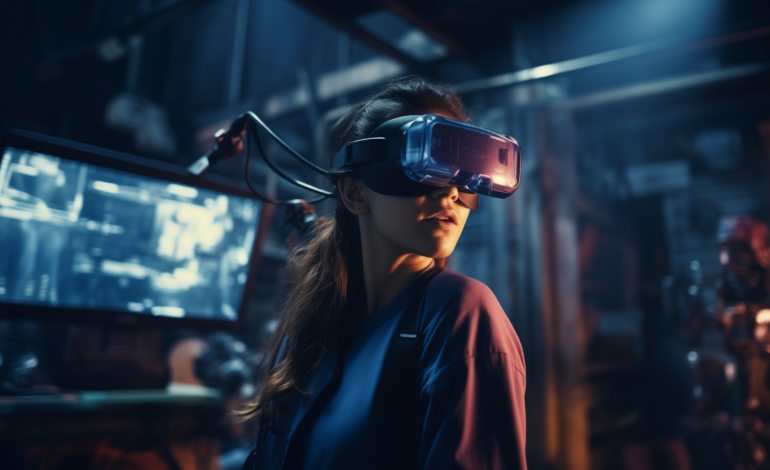Revolutionizing Business Training with the Metaverse
Olivia Smith
- marzo 18, 2024
- 3 min read

The metaverse stands to radically transform how organizations train and upskill employees through more immersive, interactive, and effective learning experiences. As skills demands accelerate, the metaverse provides a solution to engage learners and bridge skill gaps.
The Potential of Immersive Learning
Traditional training programs often fall short, relying on one-dimensional content delivery that fails to fully engage learners. But the metaverse unlocks new possibilities for truly immersive and experiential learning.
Key capabilities enabled by metaverse training include:
-
Multiplayer collaboration – Remote teams can connect together in a shared virtual environment for everything from leadership coaching to diversity training exercises. Avatars and spatial audio chat make these interactions more natural than standard video conferencing. For example, Accenture created a virtual campus in the metaverse for new employee orientation and networking.
-
Gamified learning – Quest-based challenges, branching scenarios, and real-time feedback loops make training more engaging. Gamification principles improve knowledge retention as employees level up skills. One example is Safetyium, a startup using VR simulations for industrial and construction training.
-
Virtual conferences/events – Organizations can hold interactive sessions, workshops or full conferences in a metaverse auditorium for global attendees. Attendees can network, visit expo booths, and attend immersive talks. Czinger Vehicles held a virtual launch event for their 21C hypercar in the metaverse.
-
Digital twins of real-world environments – Build virtual replicas of factories, stores, or other facilities to provide low-risk, repeatable environments for training. Employees can practice procedures or operate equipment through their avatars before working on-site. BMW implemented this approach at its car assembly facilities.
Real World Implementation Examples
Forward-thinking organizations are already using metaverse-enhanced training to develop talent:
-
Walmart leverages VR through their Walmart Academy to train 150,000 employees annually in tasks like operating a forklift or checkout station. This VR-based approach trains in 1/10th the time with improved confidence.
-
KFC simulates their kitchens using the VR program Strivr. By visually demonstrating proper frying and assembling processes, they were able to increase retention and cut training time by 25%.
-
Lowe’s Innovation Labs hold their annual innovation conference in a collaborative metaverse environment called Holoroom, increasing participation across different locations.
-
Nestle partnered with vTime to build a digital twin of one of their factories. New hires can familiarize themselves with equipment and workflows before entering the physical facilities.
As more organizations explore the creative possibilities for engaging learners, metaverse-enhanced training is poised to transform workplace learning. The potential for immersive environments to accelerate competency development is simply not possible through conventional programs.
Looking Ahead
While nascent today, training in virtual worlds will likely become a mainstream pillar of corporate learning and development within 5 years. Improved collaboration, mobility, and access will enable a geographically dispersed workforce to upskill at their own pace. Companies investing early in these approaches will have a competitive advantage in developing talent and driving a culture of innovation.




